Flowers in Every Room
Many Co-op employees can vouch for my infinite love of flowers. When the first local bouquets started arriving (late this year, due to our seemingly endless cold, wet spring), I would often parade them around, bringing black buckets of blooms into offices, gushing to anyone I shared the elevator with, or passed on the floor, exclaiming how lovely they were. “The first LOCAL flowers! Aren’t they so beautiful?!”
If anyone got tired of my excitement over a cart full of flowers, it was well hidden.
For the bountiful summer months, a blue pitcher on my coffee table is constantly filled with marigolds so bright they seem to glow in the dark, a sake cup almost hidden by the
 by Magnolia Mullen
by Magnolia Mullen



long, twisted stems of sweet pea blooms lives on my kitchen windowsill, an ever-changing arrangement in a Mason jar hides the view of guests across my dining room table, a vase on top of my dresser fills my bedroom with the scent of lilies. Not even the bathroom is exempt, my toothbrush is hidden behind zinnias crowded into a stemless champagne glass. Every room in my house is filled with flowers.
What does someone like me do during the unpleasantly cold and dark days of winter to keep that joy and color alive?

I make forever bouquets, force spring flowers to come early, and plan and daydream about the next season.

A PUBLICATION OF THE SKAGIT VALLEY FOOD CO-OP OCTOBER–DECEMBER 2022 Winter SaladsUltimate Natural RemedyGreatest Decision of All Time IN THIS ISSUE: GM Update ∙ 2 Tokens for Tomorrow ∙ 4 Holiday Lessons ∙ 5 Garbanzo Beans ∙ 7 New + Notable ∙ 11
PAGE 6 PAGE 8 PAGE 15
(continued on page 13)
FROM THE GENERAL MANAGER
GM Update
It’s been a while since I’ve given you an update on your Co-op. As you have all experienced in your own lives, the last couple years have been anything but normal. The same can be said for the Co-op. After two years of wild swings in sales and customer traffic, both are starting to level out. For the last six months, we have seen a steady growth in sales and customer count. Sales for the first six months of 2022 were over $11 million, up 11.3% compared to $9.9 million in pre-pandemic 2019. It is interesting to note that the customer count for the first six months of 2022 was down 28% from the same period in 2019. So, it’s plain to see a significant shift in shopping habits. We are seeing less frequent visits to our store, but with a greater amount of goods being purchased at each shop. This has been a consistent trend throughout the grocery industry nationwide.
This change in shopping habits is not the only impactful change we are experiencing. The pandemic has had a significant impact throughout supply chains and our regional workforce. Below are a few of those effects:
· Cost Increases - Impacts from the pandemic have contributed to food and supply inflation rates that are higher than we’ve seen in decades. Higher costs for all grocery retailers have led to a significant increase in the retail prices that consumers are now paying. Here at our Co-op, we have seen similar cost increases and have had to adjust many of our prices, as a result. Raising prices is something we are always reluctant to do. In the past, we may have held back increasing retail prices when we experienced short-term inventory and supply cost spikes, so as not to pass those through to you. This time around the increases we are dealing with are very different: the cost increases we’re seeing are higher than what we’ve previously encountered, and there is no sign they will decrease. Starting in the fourth quarter of 2021, food and supply costs increased across the board. Our manufacturers and vendors increased their cost of products and supplies by a minimum of 10%, and in some cases, as high as 40%. They were also clear that this was not a temporary increase.
· Deli Price Increases – The cost of inventory and packaging supplies (packaging costs are up 32%) for the Deli has experienced the most dramatic increases. All of the products that we make in our deli are just that: handmade, which means they’re labor-intensive. It should come as no surprise that production labor at the Co-op has increased significantly, and at the supplier level for some of our most essential ingredients. All of that is to say, we are doing our best to produce the quality products you know and love in the most efficient manner with prices that are fair and representative of the true cost of production. We are currently converting the former Third Street Café space into a highpower production kitchen. We hope to have the project completed by the end of the year. The new production kitchen will allow us to become even more efficient in our production process. We also expect to develop new products and programs in 2023 to further delight our members and shoppers.
· Out of Stocks – The amount of “out of stock” items is significantly higher than the norm. It is frustrating for you as a shopper and for us, too. We take pride in consistently procuring the items you’re after. However, the industry is dealing with long-term out of stocks on numerous popular items, including some sale items. There are supply chain shortages of raw ingredients at the
manufacturing level, challenges with shipping products, and securing labor to consistently satisfy demand. We will continue to work to secure these products. However, when it isn’t possible to do so, we can help you find alternatives.
Labor Cost Increases & Shortages – The Co-op, like most other businesses, is dealing with moderate to severe staffing shortages. We typically have several positions open with a very low number of applicants. Many people who left the workforce during the pandemic have not returned. Experts have speculated about why that is, but no matter the reason, it is challenging to find people willing to work. The good news is, our success rate in hiring and retaining staff is higher than the grocery industry as a whole because of our commitment to providing a great workplace. Over the last two years, we have significantly increased the wages of our entire staff. We are utilizing a “living wage” calculator to dictate our minimum rate of pay, and part of our commitment includes continually reviewing that pay structure. As a value-centric organization with guiding principles, we’ll continue to do the best we can financially for our staff, especially now with the ballooning cost of living and inflation.
Profitability & Earnings – And yet, despite all of the aforementioned challenges, your Co-op is healthy. We have budgeted to earn approximately $500,000 for the year, including a planned pay increase for staff at an additional cost of $325,000. I am pleased to say that as of the end of June, we were right on target to hit our budgeted net earnings. We are in a very strong position financially and have a lot of capacity for resilience, whatever the future may hold. Thanks to you all for your continued support. Because of you, we are able to provide our staff with a good workplace and fair wages. In return, they help us deliver a great shopping experience. The combination of member-owners and staff are two of our most important stakeholder groups. Together, they foster an amazing Co-op community, and our dedication to good food with an emphasis on our local economy is what makes your Co-op so special!
Retreat
Retreat; most definitions relate to what one might do when confronted by overwhelming odds, such as in warfare. To assure you, this does not reflect the state of our Co-op. The “retreat” I’m referring to is much more calming: “to withdraw to a quiet or secluded place.”
For many years, our Board retreated once a year for a full-day session. For many of those all-day sessions, we self-facilitated; one of us with specific leadership skills led the group through our agenda. While this approach was simple and economical, we lost valuable insight and input from the Board member who was too busy keeping us on track to focus on the discussion. Retreats during COVID were conducted via Zoom, which significantly reduced the attention and hence, their success. Coming out of COVID and the Zoom format, as well as our movement into Policy Governance (covered in the last Natural Enquirer), gave us pause to consider another approach to finding the quiet time we needed to discuss the ever-changing complexity of this $25 million a year anchor in Downtown Mount Vernon.
Skagit Valley Food Co op Mission Statement
The Skagit Valley Food Co-op is a not-for-profit organization whose purpose is to provide good food at a fair price. As stated in the Co-op Bylaws: The Co-op shall promote member welfare by utilizing their united funds and their united efforts for the purchase and distribution of commodities in accordance with the following criteria:

A. Maintaining the not-for-profit status of the Co-op;
B. Offering high quality products which contribute to good nutrition;
C. Supporting a low impact, non-harmful approach to the environment;
D. Supporting local suppliers and producers;
E. A commitment to building a cooperative economy and supporting others who share that commitment;
F. A commitment to educational programs relevant to members and non-members in the community.
EDITOR | Nicole Vander Meulen
LAYOUT & DESIGN | Megan Young
CONTRIBUTORS | nancylee bouscher, Tony White, Ben Goe, Leigha Staffenhagen, Magnolia Mullen
OF TRUSTEES | Brad Claypool,Kristen Ekstran, Britta Eschete, Genero Gomez, Casey Schoenberger, Rob Smith, & Tom Theisen
Copyright 2022. Reprints with permission.
Printed in Canada.
The Natural Enquirer is a quarterly publication of the Skagit Valley Food Co-op. Opinions expressed are those of the writers and may not reflect Co-op policy. No articles are meant to be used for diagnosis or treatment of illness. The Co-op does not endorse the products or services of advertisers.
While Policy Governance has helped a great deal in organizing our Board processes, it has also made our work a bit more complicated, demanding, and time-consuming. Cramming our growing retreat agenda into one long day was exhausting, and, with less than 100% attention span for the duration, left us feeling less productive. Important considerations were being short-changed. Our answer to the above was primarily two-fold: one, enlist the services of a facilitator, and two, schedule more retreats for shorter lengths of time. This has allowed us to reduce the items on our agenda, give them more attention, and have all Board members focused on the topic.
So, over the last year, we have met three times, each occasion with a three-hour agenda, facilitated by a highly experienced individual with long-term connections to the Co-op world. Agenda items have included options for investing profit; redesigning our giving program; evaluating our election processes; ways to sustain the Board and ensure it reflects our community and its values; how to grow our existing community and agricultural partnerships and establish new ones; strategic planning for growth; and maximizing our current facilities as well as opportunities for expansion. Decisions on these and other retreat topics will eventually be presented to the membership for feedback, additional discussion, and implementation.
Meanwhile, if you have any suggestions for the Board for a “deep dive” into a subject near and dear to you that also has relevance to our Co-op, feel free to let us know. We are always looking for valid and timely subjects for in-depth discussion.
Please email your ideas to: board@skagitfoodcoop.com
 FROM THE BOARD
Tony and Galen grilling up Co-op made sausage samples
by Tony White
FROM THE BOARD
Tony and Galen grilling up Co-op made sausage samples
by Tony White
2 skagit valley food co op the natural enquirer october december 2022
STAFF
BOARD
Shop online anytime! skagitfoodcoop.com Co-op Hours
7am–9pm Daily 7am–5pm Christmas Eve & New Year’s Eve Closed Thanksgiving, Christmas, & New Year’s Day
Three Cheers for Bike Rides, Local Produce, and Our Amazing Co-op!



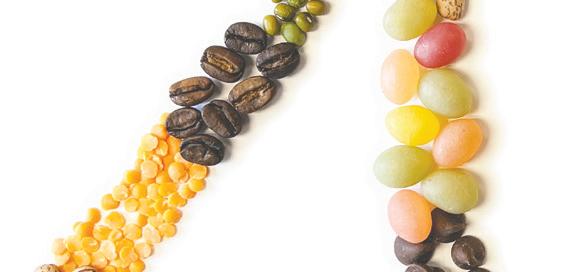









 by Leigha Staffenhagen
by Leigha Staffenhagen

In the last edition of the Natural Enquirer, we were excited to announce the return of our Bike to Farm tour, where we round up a sporty and eager group of people to bike from Edgewater Park to three local farms: Skagit Flats, Ralph’s Greenhouse, and Living Rain Farm.




After being on hiatus for the last couple of years, we’re pleased to say that we had a record turnout of participants, all excited to connect with our Co-op and some of the local farmers that provide us with produce. And the weather couldn’t have been better! Baby blue skies, the perfect temperature, and none of the late-summer smokiness that’s been more commonplace in recent years.
I’d like to give a big shout-out to Clay, our Produce Supervisor for assisting me with the ride and helping the communication process run smoothly from one farm to the next. I’d also like to thank our General Manager Tony and his wife Joan for accompanying us on the ride and serving as the caboose!
And of course, this whole event couldn’t have been made possible without the farmers – Andy of Skagit Flats, Ray of Ralph’s Greenhouse, and John of Living Rain Farm. Summer is the busiest time of year for farmers, and they generously set aside time in their schedule to give us a one-of-a-kind glance into what it’s like growing lettuce, leeks, carrots, rhubarb, asparagus, and so much more for our community.
Get Your Gobble On!



Autumn is officially here, and we’ll be taking your holiday turkey orders in no time. Here’s how the process will go this year:



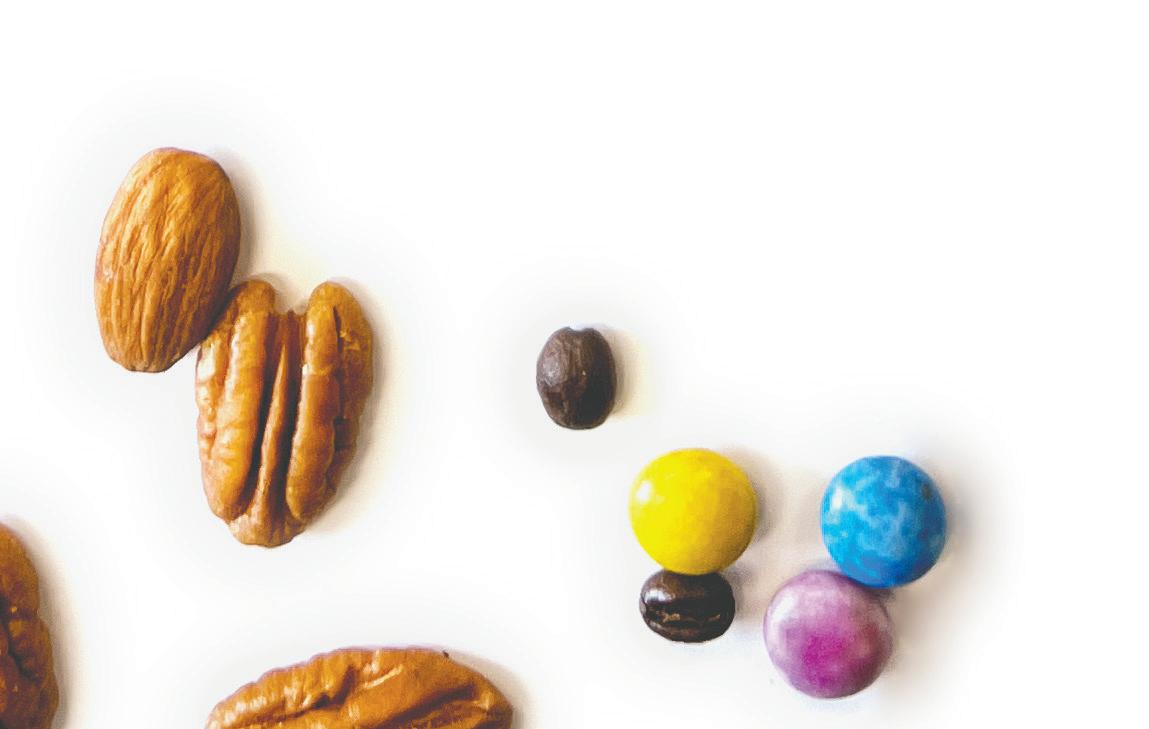


Turkey orders start November 1st. You can order your turkey in person at the Meat Department counter or by calling the Meat Department at 360.336.5087 x 128. No Deposit Required. If you missed it last year, we no longer require a $5 deposit.


· Turkeys available for pick-up Sunday, 11/20–Wednesday, 11/23. You can pick your turkey up at the Meat Department or go through the checkout registers, and we’ll fetch it for you!


· As always, our turkeys come from Diestel Family Farms in Sonora, CA. – All Diestel turkeys are 100% vegetarian fed, raised without antibiotics or growth hormones and contain no preservatives, gluten or artificial ingredients.


· Curbside Turkeys. Diestel Turkey order pick-ups will not be available through Co-op Curbside. However, we will have frozen organic turkeys, smoked turkeys, turkey breasts, and all the dinner fixings available online beginning Nov 1st. Expanded Curbside Hours. Curbside service will be open November 20–23, and December 18–23 for your holiday orders.
 Photos courtesy of Joan White
Bikes parked by the big red tractor at Skagit Flats FarmCo-op members at the first leg of the 3 farm tour
Andy of Skagit Flats Farm teaching bikers about lettuce cultivation
Photos courtesy of Joan White
Bikes parked by the big red tractor at Skagit Flats FarmCo-op members at the first leg of the 3 farm tour
Andy of Skagit Flats Farm teaching bikers about lettuce cultivation
skagit valley food co op
OFF FALL BULK SALE • OCT 14-16 COFFEE • TEA SPICES • NUTS • SNACKS FLOURS & MORE! Limited to stock on hand. Excludes special orders, water, & olives.ALL BULK ITEMS!
Meet the 4th Quarter Tokens for Tomorrow groups!
With Tokens for Tomorrow, every time you bring in a reusable shopping bag, we honor your commitment to reducing waste with a token worth 8¢ that you can give back to one of these local organizations.

Chinook Enterprises
Chinook Enterprises is a social enterprise – a non-profit designed to operate as a business, but with a social mission: supporting full participation in community life for people with disabilities or other barriers.



Full participation must start with successful employment. Chinook Enterprises believes that the need to be connected with one’s community and to be a responsible citizen is at the core of each person. Each of us can relate to the importance of having a place to contribute…to feel valued… and for most, that means a job. For many people with disabilities, finding that place can be challenging. Barriers to employment success are varied and include inadequate transportation, lack of experience, communication challenges, community acceptance and more. With help and support, these barriers can be minimized and dreams realized.
Trial By Flavor
Trial By Flavor is a free program offered by Mount Vernon City Library to help adults and families explore a world of flavor at home, gain confidence in the kitchen, and share the joy of a good meal. The library believes that good nutrition is an essential part of building a healthy and prosperous community.
The goal is to take the risk out of buying an unfamiliar spice or ingredient and carefully choose recipes that people can be successful cooking. Kits are free and available for pick up at the library, no library card required. The kits include the dry and non-perishable ingredients needed to make the recipe, a short shopping list of fresh produce, and an information booklet about the recipe, the ingredients, nutrition, and cooking tips and techniques.
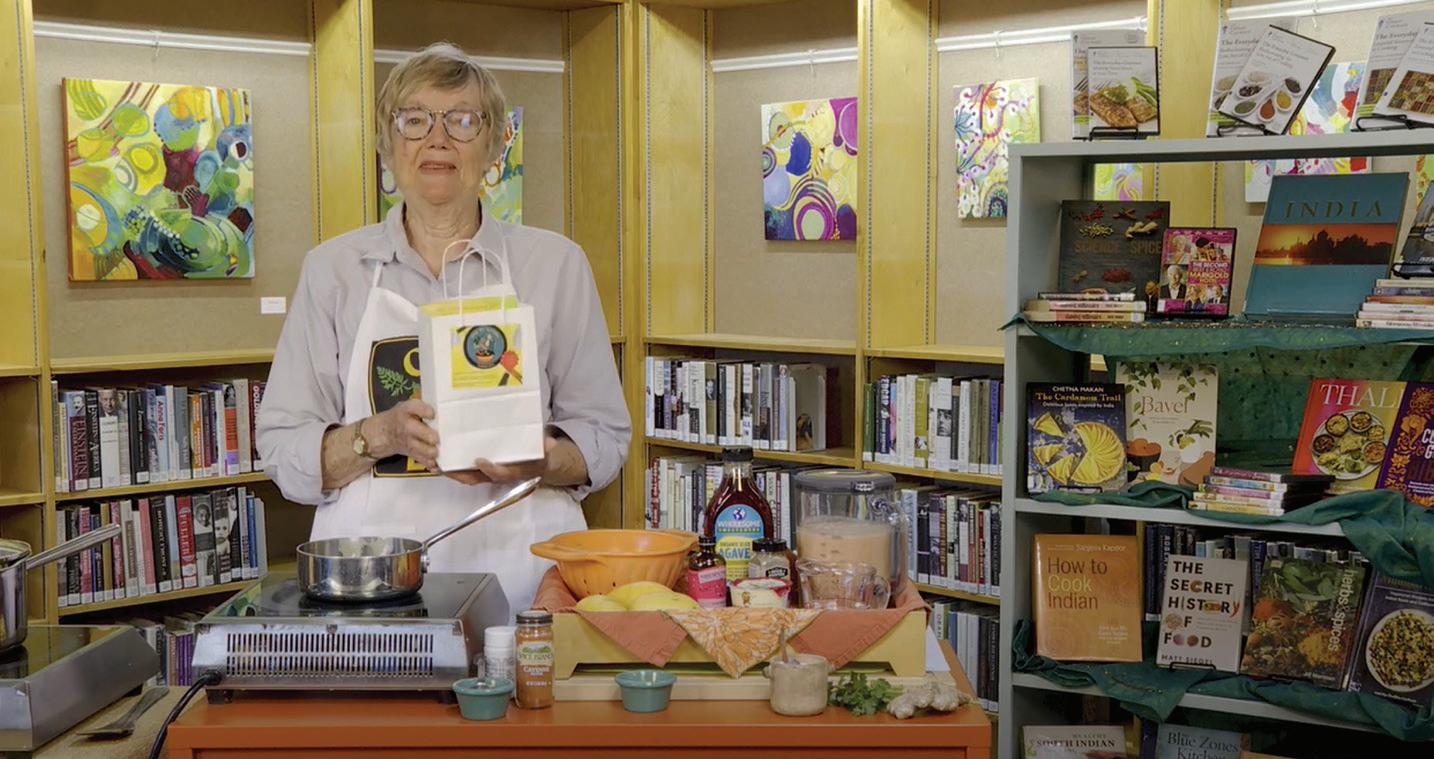

Skagit Humane Society

The Humane Society’s mission is to provide a safe haven to shelter and care for the abandoned, abused, or unwanted animals within Skagit County; to treat the animals with dignity and respect; to place these animals into loving and caring homes; to create public education programs that increase the awareness of humane treatment and the necessity of spay and neuter of all animals; and to coordinate resources for housing and placement of small animals evacuated during disaster.
Meals on Wheels
Skagit County Meals on Wheels provides services to meet the primary issue of hunger that exists among older adults in Skagit County. Tokens will help to supply meals to the growing Meals on Wheels client base. Due to the pandemic, the program has grown by over 20%. Through Meals on Wheels, $1000 supplies 112 hot, homemade meals to homebound seniors in Skagit County.
Every time you reuse your bag, you’re giving back.
How many times have you given back? How many times have you reused your bag?
Probably too many to count, and we are so grateful for your efforts. Now, how many times have you reused your bag since you washed it last? Chances are, probably too many times to count. So, please remember to wash your bags to help keep everyone’s food safe and clean. And thanks again for reusing your bag!
Co-op Mezzanine Art
Each month, we feature a local artist on our Deli Mezzanine, so you can enjoy delicious food and drink with a view. As you well know, the Co-op community is talented, spirited, and eclectic, especially when it comes to art, and the same is true for Co-op employees. There are so many hidden talents in this group! So, in celebration of local art and National Co-op Month, we’ll be featuring work from our very own creatives again this year! Be sure to head upstairs during October and get ready to be amazed by our beloved Co-op artists.
 The Co-op’s parking lot mural, painted by Emily Zimmerman in the Summer of 2020
The Co-op’s parking lot mural, painted by Emily Zimmerman in the Summer of 2020
4 skagit valley food co op the natural enquirer october december 2022
Reuse. Rinse. Repeat.
Holiday Lessons From the Pandemic: Port on the Porch; Soup on the Stove
Fall is upon us—October comes, and I have let go of the melancholy that marks the end of summer. Each spring I note the moment when the leaves are softly, greenly fresh, still damp in their emerging—tender and limp as the ears of newborn goats. But then my mind leaps ahead to the moment of their fall dryness, the crisp end of their lives, my knowledge that if this spring green is inherently bright with hope, leaf fall will feel shot through with loss.
And in September, I do feel this sense of loss. But by October, I have warmed to it all—warmed even to the coming chill. Summer is well and truly over, and the coming season holds out its own goodness.
As the holidays stretch before us, many of us are in an unusual state of between-ness. The last couple of years of COVID experience shook up longstanding holiday habits like dice in a cup and tossed them onto the table in new patterns. Our choices narrowed.
The first COVID holiday season, all the cherished, hard-won traditions felt wrenched away. The 38th annual, never-missed-a-year caroling party didn’t happen (and no mulled wine!). The Christmas Eve dinner with friends in Seattle—steady on since the 1980s—was cancelled (and no brandy-soaked English trifle!). The Winter Solstice party dating from the same era was rescheduled for the Summer Solstice (but no collective showing of It’s a Wonderful Life!). If tradition is an anchor, I, like so many others, was unmoored.
By last year, festivities seemed more possible— not at the same scale, something simpler, but still sweet. Thanksgiving saw us balancing champagne glasses under tarps by an open garage door housing a festive table loaded with appetizers—friends gathered around outdoor heaters, before heading to separate homes for smaller, family celebrations. It felt like there was much to be grateful for.

One memory keeps coming to me now. I was delivering some gifts, porch stops only—Delta had taken its toll, and the evolving Omicron was taking center stage. I stopped at the home of some friends, seen rarely in almost two years.
They opened the door with big smiles and a tray set with port and small glasses—a small unanticipated gift of a moment. We stood outside in the frosty air of a December night, bundled in our jackets and scarves, and had a toast. It went down warm the way port does. Maybe all this holiday cheer is simpler than I thought?
In the book Alive Until You’re Dead, Susan Moon writes of her decision, at the age of 76, to participate in a three-month “practice period” at the Zen Monastery, Tassajara. Her experience was not a gentle forest retreat; it was a time of cold, of deprivation, of work, of long, meditative sits, beginning each day before 4 am.
Potato Leek Soup
3-4 medium potatoes
3 leeks
· 41/2 cups water
· Milk, cream and/or butter (optional)
· Mixed herbs– dill, chives, parsley– your choice
Shiitakes or other mushrooms (optional)

· Croutons (optional)
 by Beverly Faxon
by Beverly Faxon

She went because the monastic life, its lack of choice within a ritualistic schedule, gave her an unusual freedom: “I wanted to stop worrying about whether what I was doing was the very thing that I most wanted to be doing.”

Sometimes it is endless choice that leaves us dissatisfied. As a friend asked recently, “What if we were to cease improving the moment?”
So, I’m contemplating the coming holiday season from the fall jack o’ lantern and pumpkin pie festivities right through to New Year’s, because once again, more than in recent years, I think many of us will have the odd burden of choice. Set increasingly loose from our pandemic deprivation, it may be tempting to restlessly second guess what we choose, wondering if the moment is as full as it possibly could be. The simple, port-warmed moment on a friend’s porch may not be repeated. But I think I’ll remember that for a few unexpected minutes, there was nowhere else I wanted to be.
When I find myself uncentered, stuck in a wintery discontent and reaching irritably for more, making soup centers me. Something about the chopping and sautéing, about one big, simmering pot holding all that I’ve prepared, seems to soften my tendency to flit uneasily around the house. And when I’m done, I have soup—to share with friends and family, or to enjoy on my own for more than one meal.
If, like me, soup might center you during winter’s cold, but you fear you don’t have the time to make it from scratch, here is a favorite simple winter soup recipe. It requires few ingredients, has an easy prep, and takes less than an hour from start to finish. You can make it as rich or as vegetablesimple as you prefer. And it is potato-based, so sure to be comfort food. This recipe is adapted from Splendid Soups by James Peterson.
Slice the potatoes to about 1/2 inch. You can wash and scrub them and then leave the skins on—it is faster, and I like their taste—but peel if you prefer. Wash the leeks, remove the tougher greens, then finely slice the rest.
Cover leeks and potatoes with the water, or substitute some (or all) of the water with milk— I usually use a cup of milk. Bring to a simmer (not a boil) and cook until a tested potato smashes easily against the side of the pan. It won’t take long, maybe 20 minutes—don’t overcook them.
While they cook, you have the option of sautéing sliced mushrooms in oil or butter. Remember the Julia Child rule—don’t crowd them. I like to get them a little crispy.
When the potatoes are done, take the pan off the heat. For a richer soup, add a tablespoon of butter and/or a little cream (anywhere from a tablespoon to a 1/3 cup).
Season with salt, pepper, and your choice of a pinch or more of your favorite herbs to taste. Or add chopped parsley or chives as a garnish. Garnish as well, if desired, with crispy shiitakes and croutons (the Co-op croutons are great).
Port on the porch
skagit valley food co op the natural enquirer october december 2022 5
VERA WELLNESS CENTER 303 Vera Street Mount Vernon, WA Acupuncture Barbara Paul-Mayer, MAc. LAC 360-336-6809 Core Synchronism Julie Kongs 360-630-6742 Colon Therapy Jayne De Felice, I-ACT Certified 360-336-5220 Reiki & Theta Healing® Valerie Jean Rose, Reiki Master 360-840-1723 Massage Therapy Spencer Kelliher, LMT 425-231-7605 Rolfing Structural Integration® Nils Larsen 360-293-5866 Clinical Massage & Lymph Drainage GuruBani Whitney, LMT, CLT, CPHt, RH www.alchemy-wellness.co Live a More Vibrant, Balanced, Vital & Healthy Life!
FROM WELLNESS
Greatest Decision of All Time
This time of year, you might be tempted to blame it on the rain: your mood, decisions, sleep habits. It’s a reality that we exist in nature. She pushes and pulls us as much as the moon calls the tides. Many Skagitonians thrive in the cool dampness of winter. We set that Vitamin D bottle on the nightstand, buy more candles to combat the 4pm sunset, and foolishly decide that a coffee with lunch is required. At heart, we love the excuse to be home and on our couch. Sure, we have our days we slink sadly around dreaming of sandal weather. For me, the heat makes me cranky and fidgety, and I make rash decisions. Let’s go back to the end of June for a hot sec and let me give you an example.
The day’s heat had all gathered in my bedroom, and the rotating fan just laughed when I switched it on and laid down, hoping to get some sleep before the morning’s alarm began to buzz. Instead of sleeping, I fretted about all the things I don’t have control over— which is a fair chunk turns out—and then thought that Craigslist would be a good distraction. Through a series of clicks, I found a post for two banded and budded brother goats born a month earlier in search of a home. Their long Nubian ears flipped out at the ends with the sweetest curl, and both of their tails had a wisp of white. If I was a cartoon character, I would have had big hearts pulsating over my eyes. I sent out an email of inquiry, but reasoned it was unlikely they’d still be available. ‘Cuz everyone loves baby goats.
I was surprised when I heard back the next day that the boys were still looking for a home and even more surprised when after asking nearly NOT enough questions, I decided that I would drive to Leavenworth on July 3 through that traffic mess, to pack them into a borrowed dog crate full of hay and become the world’s most enthusiast, least educated goat mama. I did do some research and get votes of support from family, but my decision was not based on the cost of goat formula (it’s almost $35 a bag) or if the cattle panel I needed to build their pen would fit into the back of my minivan (it barely did). The decision was based on one simple exchange.
I texted the photos of the boys to my husband and immediately followed up with a phone call that began with me immediately squealing in delight, “did you see those babies?!” I explained how I wanted them so bad, but I was being a team player by asking him his thoughts. His reply was that he couldn’t remember when he had last heard that level of excitement in my voice. And that immediately brought tears to my eyes. Yes, I’m a 48-year-old softie, and chances are if I put on the radio and an Elton John song comes on I WILL CRY, but the accuracy of his statement rang true.
by nancylee bouscher
In my experience, adult life consists of lots and lots of decisions we make out of survival of ourselves and those we love. As much as I love working at the Co-op, let’s be clear—I need the paycheck: I buy products I feel will keep my family healthy. I get my blood tested twice a year. I put gas in my car. I take the vitamin D I have on my nightstand. I know I am fortunate to be able to make those decisions, but I couldn’t quite remember the last time I made a decision based purely on the joy factor. Yes, the weed-eating factor of the goats has been significant since we brought them home, but in that muggy night of restlessness, I just wanted something to make me laugh.
Goats deliver the laughs. The way they invade my personal space to gently sniff my ear and try a nibble of my hair makes me giggle like a lil’ girl. How their ears whip back and forth like a new sassy summer bob on a 3rd grader as they run to greet me when I pull up in the driveway makes my face break out in the goofiest grin every time. Their aerobatic leaps from the picnic table as all of their limbs kick out at odd angles in all directions makes me feel like I’m watching my own personal furry cheerleaders celebrate a touchdown. Even how they stubbornly push on any obstacle or scream their injustice at not being allowed in the house brings me bubbles of bliss.

Of course, my head didn’t know much of this when I welcomed a whole new species into my life. While my heart was thrilled at how they nuzzled up to me while I brushed them with the pink plastic detangling brush long since abandoned in the back drawers of the bathroom, my brain was zooming around the search engines trying to decide which source to believe on the toxicity of wilted maple leaves and attempting to memorize the many symptoms of bloat. All of this brain work was to ensure their survival, but it was the steamy stream of joyfulness that fueled me. Turns out, motivation means the most. It converts a seemingly endless list of chores into an opportunity to celebrate unique blessings many others are wishing to receive. Instead of “I have to” these actions become “I get to.”
Holidays can feel like a whole lot of “I have to” served with a side of “I can’t afford this.” The struggle is real. Sludging through the day is a reality that becomes more challenging with each step for many, many people in our community. You probably can’t pay off your cousin’s mortgage or reload the memories stolen from your mother’s mind.
There are real losses and real costs we will all pay, but the winter season gives us the silence and stillness to find the ways we can share joy.
Let’s be childlike and impulsive in the pursuit of sharing joy with others. Let’s be reckless in how we express our gratitude for the blessings hiding under the obligations that come with family and work. Show up to the office with a box of pastries loaded with carbs and caring. Leave a tube of hand cream in your wife’s purse or a fresh bag of bath salts on the rim of the bathtub. Slip a pair of new fuzzy socks into your kid’s drawer. Greet your holiday guests at the baggage claim with a bouquet of flowers and a speaker blaring the song that makes you think of them whenever it comes in, and know that every person who witnesses this will feel their heart expand at your willingness to be the fool for love.
Get silly with it like a goat trying to climb into a moving wheelbarrow full of hay even though it ends in a crash every time. Be awkward and clumsy in trying to make others smile. Be stubborn in becoming the G.O.A.T. (Greatest of All Time) in protecting your peace by building a bouncy house of joy in which you reside.
There’s nothing wrong with staying in on a Saturday. Set the scene for warm, cozy nights with some of our favorites for a restful and restorative fall.
OrcaSong Farm aromatherapy sprays
LGBTQA+ owned, women run, and sustainably wildcrafted in the San Juans. What else could you ask for? Spritz yourself with a lovely flower water or aromatherapy spray: Organic Lavender, Doug Fir & Rose, or Forest Bath.

The Seaweed Bath Co.
dream soak
Submerge yourself in an ocean-inspired bath and promote a better night’s sleep with this relaxing mix of nutrient-rich seaweed, calming oat milk, and hemp oil.
Sunbeam Candles aromatherapy pillars
Truly earth-friendly and handcrafted in the USA, Sunbeams are available in a rainbow of colors and essential oil scents, to give your space a gentle glow all season long.
From The Ground Up
merino wool socks
When all you want is warm feet, slip into a pair of fuzzy wool socks from Smartwool or local brand From The Ground Up. Add more warm-fuzzies by knowing FTGU donates 5% of your purchase to Washington Trails Association.
Nancylee’s kids
6 skagit valley food co op the natural enquirer october december 2022
1 1 2 2 3 3 4 4
If Garbanzos Had an Online Dating Profile: “Adaptable, Cheery, Low Maintenance, Filled with Vitality, Reliable”
by Sarah Stoner
What do you call them?... the humble protein-packed Cicer arietinum. I rotate between calling them chickpeas and calling them garbanzos, or garbanzo beans, exactly 50-50, I’d say. Is there any other vegetable that slips so fluidly between identities? The name chickpea is of French descent, while garbanzo is of Spanish descent. But they are variously known as ceci beans, grams, Bengal grams, pois chiches, and Indian or Egyptian peas. Perhaps the ease of multiple names for this smileyface-emoji-shaped legume reflects its versatility on our plates and in our pans.
“Vegetarian and frugal it may be, but the chickpea is one of the most versatile ingredients you could keep in your cupboards,” says Israeli-born chef and food writer Yotam Ottolenghi. There are several varieties of chickpeas, and perhaps a kazillion uses for them. Hummus is possibly the most widely recognized chickpea dish in the U.S., with falafel and chana masala as close seconds.
Chickpeas have been around forever. The wild uncultivated variety (Cicer reticulatum) grows only in southeast Turkey. And evidence of chickpeas as one of the earliest cultivated legumes shows up in the Middle East as early as 9,500 years ago. That means humans have been cultivating chickpeas since before they could produce pottery.
– Yotam Ottolenghi
Chickpeas have been around forever in my kitchen, too. I definitely take chickpeas for granted. They are always there in my cupboard, canned or dry. And you know the funny thing? It took some 52 years and my 12-year-old daughter to ask, “Mom, what does a chickpea plant look like?” for me to realize—I don’t know. I’ve never stopped—ever—to ask myself this question. I was stumped.
I’ve never seen a chickpea field. I’ve never seen a chickpea fresh in its pod. I didn’t even realize they grew in pods (embarrassing, I know). And guess what! They grow right next door to us. Garbanzo and other legumes are grown in great quantities in the Walla Walla and Columbia counties as well as in California. Much of Washington’s chickpeas go into hummus, some are canned, and some are sold dry. While most people are familiar with dry chickpeas, they can apparently also be eaten fresh straight out of their pod.
They make a fantastic rotation crop because as a “nitrogen fixer” they put nutrients back into the soil. According to Google and photos—since I have yet to see one with my own eyes—the plant grows some 8 to 20 inches high. It has small feathery leaves on either side of the stems and white flowers with blue, violet, or pink veins. Strangely, “see garbanzo bean plant IRL” is now on my bucket list.
Two main chickpea varieties are the larger smooth-coated light-colored kabuli type, common in the U.S., and the smaller green irregularly-shaped desi variety common in India. India produces the most chickpeas worldwide—up to 75% of world production is the smaller green desi type. I’ll have to keep my eye out for those as well, I’m not sure I’ve ever seen them in U.S. grocery stores. Chickpeas vary from green when picked early to pale yellow or beige, to dark brown to the uncommon black Ceci neri, grown only in southern Italy.
In Morocco as a child, I have vivid memories of holding a warm cone made of newspaper, filled with roasted salty oily crunchy garbanzo beans, scooped from the spinning open roaster of a street vendor. And of hands in friends’ kitchens sifting the dried beans for stones—before the chickpeas were cooked and added to harira, the soup eaten to break Ramadan fast each sundown.
As a busy hungry adult, a quick summer go-to for me is a can of cold garbanzos—open, rinse, dump in bowl. Coat with olive oil, pinch of salt. Find spoon. Find shady spot. Eat. Rest. Feel sated. Feel grateful for chickpeas’ lowmaintenance adaptability. Always reliable.
Sarah Stoner grew up in Uganda, Morocco, Belgium, and Thailand and lived in the U.S for the first time at age 18. Along with her family, Sarah planted herself in the Skagit Valley area where she’s made—or purchased—hummus more times than she can count. | sarahjstoner@hotmail.com
Did You Know?
The leaves of the chickpea plant can be eaten as a leaf vegetable in salads or stir fries.

· Hummus is the Arabic word for chickpeas. The cooked and ground chickpea paste mixed with tahini, a sesame seed paste, is called hummus bi tahina. The Latin name for chickpeas, Cicer arietinum, is where the famous orator Cicero got his name, since his family grew chickpeas. The name chickpea is derived from the Latin word cicer, and led to “pois chiche” in French, which was then lifted from across the English Channel and changed to “chiche-pease.” Pease, in Old Middle English, was both singular and plural, like “wheat” or “corn.”
Chickpea Kale and Fire Roasted Tomato Soup
(recipe by Tori Avey)
Hearty, healthy one-pot meal inspired by Italian wedding soup. The lovely fennel flavor works well with chickpeas. Smoked paprika for depth and complexity, as well as turmeric and black pepper for an extra boost of anti-inflammatory nutrition. Great with a crusty slice of bread, or enjoyed on its own– it’s quite filling.

Serves 8
2 tbsp extra virgin olive oil
· 1 large onion, diced
· 1 bulb fennel, diced
· 1 leek, rinsed and diced
11/2 tsp salt
31/2 cups chickpeas (soaked and cooked, or canned, drained & rinsed)
· 13/4 cups fire roasted, diced tomatoes
· 11/4 cups water
2 cups vegetable stock
4 tsp smoked paprika
· 2 tsp granulated garlic
· 2 tsp turmeric
· 1 tsp dried oregano
1/2 tsp crushed red pepper - add a bit more if you like spice
1/4 tsp black pepper
· 1 bunch kale, de-stemmed and chopped into bite-sized pieces
Heat the olive oil in a large saucepot over medium-high heat. Add onion, fennel, leek and salt. Cook until soft and translucent.
Add remaining ingredients, except kale. Bring to boil, then reduce heat to a simmer and cook for 15-20 minutes, uncovered, until the soup reduces and thickens and the flavor is more pronounced.
Stir in kale. Once it is wilted and warm the soup is ready to serve. Taste and adjust seasonings as desired.
· The chickpea liquid, either from canned beans or from cooking the bean, works well as a flavorless, odorless egg replacer in recipes. Don’t throw it out! The liquid, called aquafaba, contains a mix of starch and trace amounts of protein, with emulsifying, binding, and thickening properties.
1 tablespoon aquafaba = 1 egg yolk; 2 tablespoons = 1 egg white; 3 tablespoons = 1 whole egg.
· Aquafaba can also be whipped to replace the eggs in meringues or mayonnaise.
Unlike many canned vegetables, canned chickpeas retain much of their nutritional value and remain comparable to dried, cooked versions.
· Legumes are a class of vegetables that includes beans, peas, and lentils. Legume plants produce edible seeds, called pulses. Edible seeds!
· Chickpeas are nutrient-dense, providing more than 20% daily value of protein, dietary fiber, folate, and minerals like iron and phosphorous in a mere 3.5-ounce serving. Cooked chickpeas are high in amino acids.
Around the World
In the Philippines, chickpeas persevered in syrup are eaten as sweets and in desserts such as halo-halo.
· In Sicily, panelle (little bread) is a popular chickpea fritter snack.
· In Tuscany, chickpea flour (farina di ceci) is used to make an oven-baked pancake.
In India, unripe chickpeas are often picked out of the pod and eaten as a raw snack.
· Chickpea flour is known as gram flour or besan in South Asia and is used frequently in South Asian cuisine. Besan is used as a batter to coat vegetables before deep frying to make pakoras.
· Chickpea flour is used to make the Mediterranean flatbread socca and is called panisse in Provence, southern France.
· Guasanas or garbanza is a Mexican chickpea street snack. The beans, while still green, are cooked in water and salt, kept in a steamer, and served in a plastic bag.
Vegetarian and frugal it may be, but the chickpea is one of the most versatile ingredients you could keep in your cupboards.”
Garbanzo bean pods
skagit valley food co op the natural enquirer october december 2022 7
The Ultimate Natural Remedy

Fun fact! I used to sell hot tubs. It was my first fulltime job after college, and I’ve been waiting my entire adult career for that bullet point on my resume to hold some sort of relevance. And maybe, this is finally it? Truth is, I wasn’t very good at it. I was too green in the world and starting my slide into minimalism, where discretionary spending, especially on luxury items like giant hot tubs with a TV, stereo, and LED lights, was ridiculous. I simply couldn’t sell what people could do without.

I also knew too much: the water in the tub is the only thing you need. It was part of the spiel. When customers lamented about not being able to afford the jumbo jet package, I assured them the basic models were just as effective, and maybe even more relaxing without the hum of a blower motor. More bang for your buck! The best thing about hydrotherapy is you simply have to be in the water for it to be therapeutic, no bells and whistles required.
And I knew this because the owner Pat insisted. He was a pioneer of California Cooperages, the original cedar hot tubs—lacking in features, but full of healing. He sat in his jet-less wood Cal Coop every day to help ease his Parkinson’s. I had also just spent the last four years playing volleyball with Pat’s daughter, and his wife Patty happened to be an Aquatic Physical Therapy Assistant and the university’s Assistant Aquatic Director. Patty has instructed water classes to community members, students, and studentathletes for decades. So, during volleyball training camp (the grueling three-a-day practice schedule leading up to actual games), our second practice was always in the pool with Patty.
Now, a swimming pool probably isn’t the place you’d imagine a volleyball squad getting ready for the season, but we were a well-chlorinated bunch. We spent hours in the water, but swimming? No. We were doing anything but. Patty led us through countless exercises: water aerobics, water polo, plyometrics, kickboxing, Tae Bo, ai chi, stretching, pull-ups from the diving boards, aqua-jogging (that’s running in the deep end with a flotation belt), and, of course, a few cannonballs.
All this, because water provides a constellation of benefits. The cool temperature relieved soreness from the first practice and prevented soreness from the current; water pressure creates more resistance with less impact; buoyancy offers stability and balance building in equal measure; and cardiovascular performance increases the moment you jump in. Our time in the water was a glorious combination of intense conditioning and restoration.
Our pool practices were so noteworthy, in fact, that even the football team started underwater stretching sessions and ai chi with Patty, to prevent injury and increase mobility. New to the grid iron gang and new to me, yet, the healing properties of water are well known. Modern science is diving deeper into the benefits of cold water, while bathing rituals have taken many forms across culture and time.

You of course know the saying “all roads lead to Rome.” Originally built so the Romans could quickly transport armies to expand the Empire, these roadways led to the conquest of land and water. And so, aqueducts were another feat of Roman engineering, constructed to channel fresh, clean water into the city.
One such aqueduct, the “Aqua Nova Antonine,” was built specifically to supply water to the Baths of Caracalla. Completed in 216 A.D., the Baths of Caracalla are one of the largest thermal complexes of the ancient world, and were able to accommodate 8,000 people—complete with shops, gyms, libraries, changing rooms, a stadium, massage chambers, and, the baths. Visitors could immerse themselves in cold baths (frigidarium), warm baths (tepidarium), hot baths (caldarium), and a giant waist deep swimming pool natatio). Romans rich and poor flocked to Caracalla like tourists to Trevi Fountain.
The Japanese are also well known for their bath culture. Many people in Japan think of baths as a literal cleaning, but also as a washing away of fatigue, so it’s typical to take a bath every night. However, people used to head to public bath houses (sentō) a few times a week to bath and socialize because they didn’t have tubs in their homes. Borne out of necessity, sentōs remain popular in Japan for residents and visitors alike as a place to relax and gather.
In Turkey, a traditional Turkish Bath (hammam), is constantly hot, and humidity is quite high. In fact, the word hammam is of Arabic origin and means heating and being warm. The warm environment encourages muscle relaxation and rests the body, while the steam helps open pores and slough off dead skin. Turkish baths have taken their place among the beauty secrets of Ottoman women.
For want of cleanliness, community, wellness, beauty, and even godliness, baths have a mythological presence, too. Ponce de Leon, another man of the conquest, etched himself into folklore as he searched for the fountain of youth in Bimini, a spring that promised to restore the youth of anyone who drank or bathed in its waters.
While the Romans paid a nominal entrance fee, as do the Japanese, in modern times, it’s common to pay a pretty penny for spa treatments and foreign bath experiences. I once spent an invigorating evening at Banya5, an urban spa in Seattle that combines Turkish hammams, Russian banyas, Finnish saunas, with cold, tepid, and hot pools (like the Caracalla Baths), into a single circular experience. The idea is to move between extreme hot and cold, then rinse and repeat, for an invigorating yet peaceful affair—all day, if you’d like.
The sauna, banya, and steam room stimulate circulation and increase blood and lymph flow. The hot and warm tubs can help relax muscles. The cold plunge constricts skin pores and blood vessels that have been dilated from the heat to flush metabolic wastes and toxins. Hot, cold, back and forth. I left feeling like a squeaky-clean rubber band, juxtaposed between the kinetic potential of taking immediate flight and or curling up into a bliss-induced coma.
Other spa experiences are even more lavish, and exclusive. The New York Times recently published an article in its Luxury Real Estate section called “Beneath the Surface: A Peek at Private Pools.” It highlights an underground water world, “a hidden realm most will never know: subterranean natatoria carved into basement floors and exquisitely maintained.” Hot tubs, lap pools, steam rooms, celestial murals, mood lighting, no-suit-required privacy—the aquatic amenities are absurd in their opulence.
But now that you know that world exists, don’t you want in?
Me too. But this is me, the former hot tub salesperson telling you, you don’t need it. It’s part of the spiel! You don’t need the all-access pass, jet package, or even the jacuzzi. You now know too much.
For more information call Danielle 360-661-8458
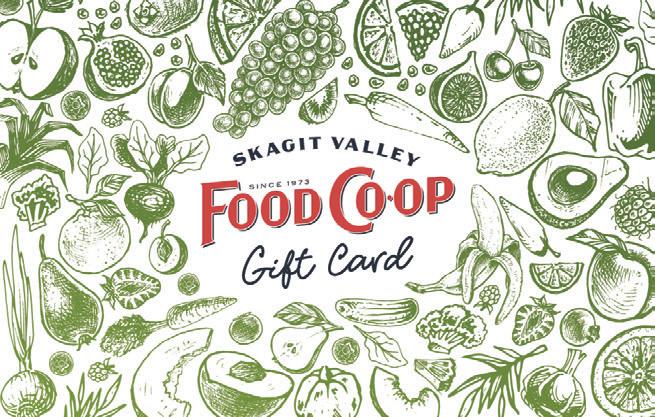
 by Nicole Vander Meulen
Underwater volleyball practice
Pat & Patty practicing ai chi
by Nicole Vander Meulen
Underwater volleyball practice
Pat & Patty practicing ai chi
8 skagit valley food co op the natural enquirer october december 2022
New Yearlong Transformation Journey: 2 days/month in the field +2 hours/week onsite or online FARMFIT Personal Training & Health Coaching at Highwater Farm NATURE. BODY. MIND. BUILD STAMINA. MOVE WITH NATURE. PRACTICE MINDFULNESS. CONNECT TO NATURE • CONNECT TO YOUR FOOD • CONNECT TO YOUR BODY www.fieldsofrecovery.com/love-your-body fieldsofrecovery@gmail.com
The lesson to learn from all of these old-world wellness rituals, big city billionaires, and Pat and Patty, is that most of us already have access to the only thing we need right at our fingertips: clean, running water and a bathtub, that forlorn and forgotten luxury in your home. We are emperors—gods, even—with the power to cure whatever may be ailing us.
If you’ve ever popped into the Co-op Wellness Department, you’ve surely met Nancylee, another goddess of healing, and she’s surely sparked up a conversation that’s left you laughing (more medicine). She and I have talked a lot about the power of water and were chatting last fall about a gentleman who came in seeking a natural pain reliever because his foot was hurting. Nancylee asked if he had tried taking a bath, and he admitted that he had not. In fact, that it had not even occurred to him. So, while the Co-op has hundreds of amazing and effective alternatives to traditional medicine, she recommended what? A bath.
Ah yes, you know this now, the ultimate natural remedy: water. All you need is to be in it for it to work, and temperature only matters because there are various degrees of healing. As for warm water, from arthritis and anxiety to aches and pains, I’m not sure there’s an everyday annoyance a bath can’t cure, including a sore foot.
My tub is my sanctuary, a tiny oasis of well-being. Somehow, I’m still playing volleyball, and my body loves and hates me for it. The hate is stronger than the love these days, so I wash away the soreness with a hot bath. My shoulder thanks me. My back cries less.
I battle with a mood disorder, so I hop in the tub when I want to relax and recharge, or just be a nice human, especially to myself. Research has shown warm baths can reduce stress hormones and balance
serotonin levels, both of which help regulate mood. The same research shows that bathing in hot water (104°F), for a half-hour can help decrease depression symptoms.
Other research shows that a well-timed warm bath may help with sleep. The high temperature of a bath cause blood vessels to dilate, which can lower blood pressure—another miraculous benefit.

Bath time can also provide escape, from stress, your kids, the weather, whatever. It’s a simple and polite way to isolate, in a good way. You can lock the door, open the tap, and drift away. I often find myself in Wellness picking out frou-frou tropical bath salts, so Burlington feels more like Bermuda.
Me time, self care, DIY spa day, whatever you want to call it, your bath time can look however you want it to. You can toss in those bath bombs, light candles, and snap a picture of your bubbly toes for the internet to envy how relaxed you are, but again, it doesn’t have to be that elaborate. Just be in water.
My advice? Ditch the device. Soak up the warmth. And at some point, add ice! This was another part of the sales pitch. Hot tub shoppers would often ask what they’re supposed to do with their hot tubs in the summer, especially when the Spokane heat reached triple digits. Too hot to hot tub? Lower the temperature and transform your hot tub into a cool tub for reprieve from the sweltering sun, and of course, more hydrotherapy. (You just have to be in it.)
Like we spent hours in the pool as a team, we were also required to sit in teeth-chattering timed ice baths after the last practice of each training day. The cold water and compression from the water itself constrict blood vessels, which helps flush waste products from the system, including lactic acid (which
is what causes muscle soreness). Simply, these baths helped with rest and recovery.
Rest and recovery! How dreamy are those two words? You’ll find that some of the world’s most elite athletes have rigorous training programs, including a very intentional rest and recovery schedule, complete with deliberate cold exposure like ice baths. And as science progresses, some are even going to the extent of scheduling time in cryogenic chambers, a whole-body experience where a person exposes their body to liquid nitrogen subzero chambers.
You don’t have to be an Olympian to rest and recover like one. A cold tub, a cold shower, or an ice bath can reinvigorate your body’s systems. And here’s the part where I tell you it doesn’t even have to be an entire tub. A cold splash to the face isn’t just a trick; it triggers a real physical reaction. In his book Deep, James Nestor explores the wild sport of freediving and learns some startling facts of human physiology, that we’re actually designed to survive underwater through a life-preserving phenomenon called “the mammalian dive reflex,” also dubbed the “Master Switch of Life.” Nestor’s reporting confirms “that a person need submerge only their face in water to activate [these] life-lengthening (and lifesaving) reflexes.” It’s that simple.
So, next time you need a pick-me-up, skip the afternoon coffee, and splash some water on your face. Feeling sore? Get in the tub. And when the new year rolls around? Instead of resolving to drink more water, just be in it. I’ll be starting with a polar bear plunge on New Year’s Day.

And maybe now, after all these years, I’ve successfully sold you a tub full of water.
Bath Time Rituals
I used to take baths every day as a kid – not shower. But now, as an adult, I don’t because I’d have to clean the tub. And the reason I need a bath is because my body hurts, so I’m definitely not cleaning it because that hurts.
I’m a firm believer in icing. And also baths. I have arthritis, so I take two Epsom salt baths a week. You know, because Epsom salts help extract toxins from your body. I just feel so much better, and it relieves the pain. I love the quiet of a bath – no noise, dim lights. I just relax.
I don’t know when the last time I took a bath was. Maybe 10 years ago? I’m just more of a shower person, and our home set-up isn’t great. I guess if I had a better bath tub, I probably would.
Literally never. I’ve always loved the idea of baths… the ritual of drawing the water, dumping in the salts, and lighting a candle with a glass of wine after a long day, but then reality sets in, and I find myself bored and feeling like I’m wasting time and water. I don’t like being pruney. So the last bath I took was probably 3 years ago, and 3 apartments ago. We currently have a combo shower/bath. I think if I had a legitimate standalone bathtub I’d take way more baths.
I don’t. It takes too much time. We actually have a really nice tub, but I’ve probably only been in it 5 times in the 5 years we’ve lived there. But my daughter has really gotten into it over the summer to help calm her anxiety. She brings in some music and just zones out.
As often as possible! At least once a week, but up to three times. It’s just such a great way to unwind, relax, and soak in Epsom salts. I usually listen to music and bring a magazine for some light reading… as in, I tend to fall asleep, and have ruined a couple books that way. It only takes dropping one library book to really learn your lesson.
· I can’t remember. I don’t because a) I’d have to scrub my bathtub. But I did just move, and we have a nice tub that I fully intend to use. I have Epsom salts and candles ready!
I don’t have a tub anymore, but I used to at least 3 times a week. Bubbles! Champagne! All of that. I think it’s really important to reward yourself for hard work. Plus, it’s good me time.
I don’t fit in my tub! I think it’s made for a toddler, and I’m not trying to scrunch up or have my legs hang out. So, it’s been a long time. But, I did live in a house with a big jetted tub in high school, and that was really nice.
I asked some of my coworkers how often they take baths, if at all, and why they do (or don’t). Here’s what they had to say:
skagit valley food co op the natural enquirer october december 2022 9
brigid collins family support center
Brigid Collins is a community-based organization dedicated to ending child abuse by building strong families and protecting children.




Funds will be used to offer nourishment in Brigid Collins’ Children’s Advocacy Center, including healthy drinks and snacks for families during forensic interviews, medical exams, and therapy support. Any remaining funds will be used to purchase comfort toys and healing journals. 4% Friday funds will address a root cause of social problems like violent crime, homelessness, teen pregnancy, health problems, and substance abuse by aiding in the prevention of child abuse.
Shop,
Every time you shop at the Co-op you help support our local economy and community. 4% Friday is another easy way to do your weekly shopping and contribute to organizations you care about. You shop, and together we give 4% of the Co-op's sales on the 4th Friday of each month to a non-profit community organization.
youthnet
The purpose of Youthnet is to provide foster homes for children in need of a temporary home until they can reunify with their families. Youthnet also provides family preservation services to keep families safely together by teaching parenting skills and providing support services. Additionally, Youthnet assists youth with independent living services to prepare them for when they exit foster care and provides resources and education for local migrant families.
Funds from 4% Friday will be used to support youth by providing equity, diversity and inclusion, and cultural competency training for foster parents so that youth can be given the best quality of care that supports individualized needs and honors their identity, race, and culture with knowledge and understanding.
help me grow skagit family center

Since October 2020, The Children’s Museum of Skagit County has housed and run Help Me Grow – Skagit Family Resource Center. Help Me Grow aims to offer families seamless access to community services and support so they can easily connect to what they need, when they need it.
Help Me Grow will use 4% Friday funds to purchase supplies to be distributed to families in need. These items range from household and personal care basic needs items to other infant and childcare related items. To date, Help Me Grow has provided assistance and/or basic needs and education items to over 1,188 families. Through various partnerships, they have distributed over 200,000 diapers in the past year.

10 skagit valley food co op the natural enquirer october december 2022 oct 28
June 2022 $2,893 Skagit Gleaners July 2022 $3,079 IRIS August 2022 $2,700 Communities in Schools Together we gave: You
We Give 4% nov 18 dec 23
Ancient Herbal Wisdom & Community Love: Flying Bird Botanicals
How do you take your tea? Piping hot with a drizzle of honey? Cooled down with cream and some raw sugar? Or maybe you like a squeeze of a lemon, just enough to make your face scrunch up and lips pucker, in the best way possible.
As for us, we take our tea the Co-op way: sustainably sourced, organic, and made with love and thoughtfulness. We’re so pleased to introduce a local tea brand that checks all those boxes. Meet Bellingham’s own Flying Bird Botanicals and founder Scout Urling!


Launched in 2006, Flying Bird Botanicals Tea was initially sold online and at local farmers markets. But for Scout, the love of wild edibles and plant foods started much earlier. As a kid, Scout recounts the many “foods” she made out of plants in the garden. Between foraging activities and the creative spirit instilled in her by her mother, Scout always knew she loved creating, simply for the sake of creating. But nowadays, it’s translated into a career and a small business with employees, too!
by Leigha Staffenhagen
Not Your Average Cuppa
With a bird’s eye focus on community, sustainability, and quality products, Flying Bird Botanicals tea blends are made with intention, and attention to small details like the biodegradable silken tea bags and organicallygrown herbs. And like the Co-op, Flying Bird has a deep care for the community, too.


While tea leaves themselves can’t be grown in our climate, many of the herbs used in Flyi ng Bird blends do. So, Scout sources local ingredients whenever she can. And when she can’t, she has a slate of other organic farms she works with directly in Oregon, Montana, Idaho, and Vermont as well as exotic herbs and spices from Japan, China, India, Sri Lanka, and Africa. She also works with a women-owned cooperative in Nepal, which Scout is especially proud of.
As far as the blends are concerned, Scout strives to create teas that are medicinal, but flavor is always in the forefront of her mind. Scout puts it simply, “You could make anything medicinal, but no one is going to drink it if it doesn’t taste good.” All of the tea blends are mixed by hand at their Bellingham shop. Even tea bound for Seattle for bagging and packaging is hand mixed before being sent down the interstate.
Birds of a Feather
And we just can’t wrap up this article without giving a nod to the wonderfully whimsical bright and botanical illustrations that grace Flying Bird’s tea tins.
If it weren’t for a chance encounter with an event poster, Flying Bird’s gorgeous logo and packaging might look very different. Scout came across said poster promoting a local music gig in Bellingham and was immediately struck by the art style. She found the designer’s name scribbled on the poster, tracked them down, and the rest is history.
When tea time comes ringing next, swing by the Co-op and pick up some Flying Bird Botanicals for a sip of something extra special, and extra local. And make sure to snag a fresh-baked Co-op scone while you’re at it.
NEW + NOTABLE
Sips & Treats For the Sweetest Time of Year
Now that we’ve transitioned to fall, you likely have two things on your mind: the upcoming holiday season and the fact that the sun is setting much, much earlier. The good news is our grocery team has been hard at work finding new products to help you tackle those contrasting mindsets: bright, bubbly sips and ice cream treats to remind you that summer is never that far away, and delectable baking essentials to embrace the cozy holiday season.
Soft Drinks
Rachel’s Ginger Beer
Whether you want to treat yourself to a post-work Moscow Mule or simply want to enjoy something sweet and bubbly with your Co-op sandwich, reach for a bottle of Rachel’s Ginger Beer! Handcrafted in Seattle and sold at the infamous Pike Place Market, Rachel’s has quickly become one of the great PNWmade delicacies. Made with only fresh water, lemons, organic sugar, and ginger, you’ll find a colorful assortment of their original, blood orange, and pink guava ginger beers in our chilled drink case in the Deli.
GT’s Cola
You’re likely familiar with GT’s Kombucha – it’s been a mainstay at the Co-op for many, many years. But what about GT’s Cola? Made from an adaptogenic mushroom infusion of Reishi, Chaga, and Turkey Tail mushrooms, this black tea-based kombucha-cola mashup is unlike your traditional probiotic drink. All we can say is you’ll have to pop one open for yourself.
De La Calle Tepache – Todos Los Sabores!
Tepache: a fermented beverage made from pineapples, sweetened with sugar and cinnamon. Traditionally sold chilled and served in a plastic bag by street vendors in Mexico.
De La Calle Tepache: also fermented and prepared with the traditional recipe in mind, but canned, and readily available at your Co-op!
When we introduced De La Calle’s tepache back in the summer of 2021 we started off with just a few of their most popular flavors: Tradicional Pineapple, Tamarind Citrus, and Mango Chili. Now, you can find all of their sweet and spicy probiotic-packed flavors in the chilled drink case in our Deli! Our favorites? It’s a tossup between the Watermelon Jalapeño and Tradicional Pineapple – there’s just something to be said about the original pineapple drink that started it all.
Ice Cream
Molly Moon’s Minimoon
Something new for when you you’re craving just a little something sweet: Molly Moon’s minimoons!
These adorably small, wildly delicious treats are just 4.5 ounces and the perfect size for filling that sweet tooth, without post-pint remorse. They even come with a teensy wooden spoon. Choose from sweet cream, salted caramel, and cookie dough.
Molly Moon’s ice cream is more than just a delicious dessert– every year, they give at least 10% of their profits back to food banks, equity organizations, and women and girl empowerment initiatives. We’ll raise a spoon to that!
Molly Moon Ice Cream Toppings: fudge, caramel, sprinkles
A new tradition we’re scheming on for the holidays, is a DIY ice cream sundae bar! Yes, winter is a perfectly acceptable time of year to continue eating ice cream, and no sundae bar is complete without the sprinkles, fudge, and caramel sauce. Find Molly Moon’s ice cream toppings next to our ice cream case.

Lopez Island Ice Cream Sandwiches
A Lopez Island classic – but take it on the go! Lopez Island Creamery picked some of their most popular flavors; vanilla, Skagit strawberry, mint, and latte, and sandwiched them between two chocolate cookies. The package says it all – big enough to share, good enough not to. Find them in the ice cream case.
Holiday Baking
Simple Mills Pumpkin Pancake & Waffle Mix + Apple & Pumpkin Muffin Baking Mix
Nothing screams fall more than pumpkins and apples. Embrace the season with new baking mixes from Simple Mills. Whether you’re whipping up a batch of weekend brunch pumpkin pancakes, or a tray of after-school muffins, all of Simple Mills baking mixes are gluten-free and made from almond flour. Find them in the baking aisle.
Supernatural Sprinkles
What’s a sugar cookie without the icing and sprinkles? Just in time for the busiest baking season of all, Supernatural Sprinkles are soy and glutenfree, 100% vegan and made of just a few simple ingredients. No Red 40 or Yellow 6 in sight! Choose from 5 varieties that are sure to get you in the holiday spirit: Christmas Sequins, Snowfall, Ugly Christmas Sweater, Into The Woods, and Jingle Pop. Find them on the baking aisle.
Sweet Loren’s Cookie Doughs
Maybe you don’t want to whip up cookies from scratch. Maybe you need something quick for that work potluck that you totally didn’t forget about in the midst of busy holiday planning. Either way, Sweet Loren’s Cookie Dough is pre-portioned, vegan, gluten-free, dairy-free, and nut-free, making it a quick and easy grab ‘n’ go dessert perfect for any party (or pajama day). Choose from Chocolate Chunk, Sugar Cookie, Fudgy Brownie, and Oat Cranberry.
Scout, owner of Flying Bird Botanicals
skagit valley food co op the natural enquirer october december 2022 11
VENDOR SPOTLIGHT
15th St Anacortes 360.421.4655



Anusara, Vinyasa, Sound Baths & more! Beginners to Masters! Private Lessons available! Join us for Mindfulness Meditation, Ballroom Dancing or a Yoga Workshop!

Unlimited Yoga $35






Contact The Natural Enquirer: nicolev@skagitfoodcoop.com 360.336.5087 ext. 136 or visit our website at www.skagitfoodcoop.com We offer discounts for prepayment. All first-time ads MUST be paid in advance. The ad deadline for the next issue (January 2023) is Friday, November 18. Ad Rates & Sizes The Dancing Camel Yoga Studio 910
Yoga Classes Daily! In Studio & Virtual Classes for all abilities!
New Student Special 2 Weeks
Are you a teacher? Have a skill or subject you’d like to share? We can host your class! Studio rentals! thedancingcamelyoga.com yourgoldenrosehealing.com & Personal healings with Valerie Rose REIKI BLESSINGS You are invited to a weekly meditation for World Peace for Inner Peace for You 12 skagit valley food co op the natural enquirer october december 2022
Community Giving in Action
Lavender, statice, hydrangeas, and strawflowers (try cutting the stems at the base of the flower and piling the buds into an interesting shaped clear container), bachelors buttons, yarrow, globe thistle (any foraged from the side of the road or path do the trick for me), poppy and pincushion seed pods, bunny tails, pampas grass fronds, and wheat bundles all make wonderful dried arrangements. I am known to gather and bring indoors bunches of sticks covered with lichen, red twig dogwood branches, evergreen boughs, maple leaves to press, and pine cones to put in a bowl. When the nights get longer and the temperature drops, I move from spending evenings on my porch watering plants and watching the sunset to cozying up in front of the fire with a glass of wine and a copy of The Whole Seed Catalog (which is an absolute work of art in addition to being a seed catalog). And I still get to enjoy flowers in every room.
Cooler temperatures and more rain make autumn an excellent time for planting trees, shrubs, and perennials. Evergreen flowering plants such as camellias will bring you masses of blooms as early as February. Hellebore, some of which begin blooming in December are commonly and appropriately called Christmas Roses; their blooms are long-lasting and quite precious peeking out from underneath drifts of snow. Red twig dogwoods are deciduous but add color to the garden when their vibrant branches are on display in the winter months. Other late winter/early spring bloomers are bulbs that should be planted in the fall. Crocus, hyacinth, grape hyacinth, daffodils, paperwhites, iris, ranunculus, and thirty varieties of tulips will have arrived at the Co-op in September.
To bring spring flowers early, force bulbs. Paperwhites and hyacinth can be forced in just water. Use a container with rocks or marbles underneath the bulb, making sure the base of the bulb is not submerged in water, which will cause it to rot. Hyacinths need a chilling period of 12 weeks to mimic winter temperatures.
A refrigerator without fresh fruits and vegetables is best, so as to not expose the bulbs to ethylene gas, which can also cause the bulbs to rot. (Have you ever had the misfortune of smelling a rotten hyacinth bulb? I won’t try to explain except to say it is gag-worthy.) Please handle hyacinth bulbs with gloves! They contain calcium oxalate that causes a tremendously unpleasant itching and burning sensation.
Finally, after months of being busy with my outdoor plants, the annuals come to the end of their summer cycle, perennials rest until the next season, and the bulbs are carefully tucked into the earth, I am able to focus my attention on my indoor plants. It brings me pleasure to still care for plants when the weather is hostile, and rain is pelting my cabin’s windows. Peace Lilies, Anthuriums, African Violets, Orchids, and Christmas Cactus can all be purchased blooming in the winter months. With proper care, they will give you weeks and sometimes months of blooms.
Honor the seasons and rest when the Earth does. Before we know it, the days will lengthen and it will be spring again. It will be time to buy seeds, and you will begin to put into fruition your dreams and ideas that have been sprouting all winter long.
A Replacement Tractor for Viva Farms
In early June, a tractor was stolen from Viva Farms, and they asked the community to help replace it. Viva Farms has been providing education and resources to beginning farmers since 2009, and this tractor didn’t serve just one farm, but many. Viva was hoping to raise $45k in 45 days to procure a new tractor. The Co-op helped kick off the fundraiser with a $2,500 donation. From there, donations started pouring in from the community, and instead of raising $45k to replace the tractor with a similar make and model, Viva was able to raise nearly $85k, enough to purchase a brand-new tractor! The new tractor will be available to 30 incubating farms this year, and new farmers each year into the future.
$6,000 Donated to Fight Hunger
Thank you, Co-op owner-members! You did it again! In 2020, we asked you to donate your patronage dividends to Skagit Food Distribution Center, and you did. And now, in 2022, you were given the same opportunity to donate refunds, and it remains clear that you care about fighting hunger in Skagit Valley. Thanks to your generosity, and a round-up from your Co-op, we were able to donate $6,000 to the Distribution Center, used to put even more food on the tables of those who need it most.

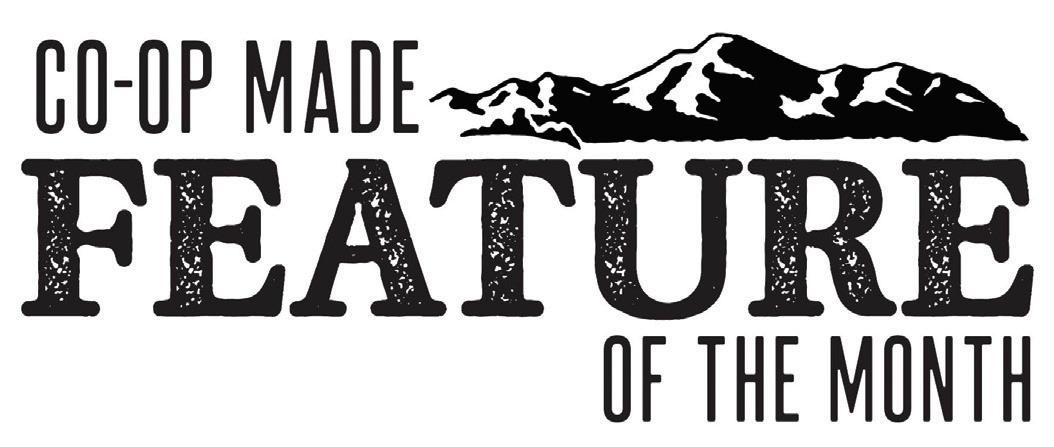
It’s the most flavorful time of the year! And we’re here to help make your holiday meals simpler and more memorable with a delectable selection of handmade items. From fall favorites like gooey caramel and warm cinnamon to holiday table essentials like butter rolls, dips, and cranberry, here are just some of the wonderful foods you can look forward to enjoying from the Co-op this season:



October November December
Carolina Garcia
HR Assistant Co-op Employee since February 2018
Favorite customer moment:
I don’t have a favorite moment, but I worked on the sales floor for over four years. One of my favorite things was to see complete families come through our doors. The kids who are learning at such an early age how important good food is for our health. They are building good habits at such a young age.
Favorite item in the Co-op: Bee Sting! I love that it’s not too sweet. It’s buttery. It’s perfect!
Favorite meal to make at home with Co-op ingredients: I love to make a quinoa salad. My secret ingredient is the Citrus Vinaigrette, which is made by the Co-op. My whole family loves it.
Favorite way to spend time outside of work: I love to travel. I was recently in Puerto Vallarta, Mexico celebrating my wedding anniversary. I also love to cook. I love watching my family enjoy the foods I prepare with so much love.
 Merry Cranberry Smoothie
Cane Black
Cupcakes
Candy Cane
Viva Farms
Merry Cranberry Smoothie
Cane Black
Cupcakes
Candy Cane
Viva Farms
skagit valley food co op the natural enquirer october december 2022 13
STAFF PROFILE Flowers in Every Room (continued from page 1) • Pumpkin Latte • • Caramel Apple Bars • • Twice Baked Potatoes • • Pumpkin Ice Cream • • Autumn Spice Smoothie • • Salted Caramel Thumbprints • • Butter Rolls • • Eggnog Ice Cream • •
• • Candy
Bottom
• • Deli Made Dips • • White Chocolate
Ice Cream •
Co-op High Five Recipes
by Leigha Staffenhagen
Busy back-to-school routines, holiday parties, less daylight… there are plenty of reasons you may not feel like cooking at times. But before you order takeout (again), it’s time to re-imagine what dinner can look like. Instead of following an intricate recipe with 20 ingredients and even more steps, go for something simple, with a lot less prep and way more yum!
You’d be surprised to find out just how many meals are a total high five – five ingredients that is! From comforting, cozy pasta and soups to protein-packed entrees and pizza too, we’re here to help make these recipes even easier with some of our favorite Co-op foods, made right here.

Ravioli Casserole
While this less-than-traditional take on lasagna certainly isn’t your Italian grandma’s recipe, it is fuss-free and easy enough to make on a weeknight, and I mean it. I made this recipe after working a 10-hour shift, and it was easy-breezy, extra-cheesy.
Serves 4
· 1 package of Fresh Ravioli
· Co-op Made marinara sauce
· Co-op Made Spaghetti Meat Blend
2 cups shredded Mozzarella
· 1 yellow or white onion, diced
Additional pantry ingredients: Italian seasoning, salt, pepper, oil
Preheat the oven to 350ºF. Prepare the ravioli according to the package, making sure not to overcook them. Drain and set aside.
Heat a drizzle of olive oil over medium-high heat in a large sauté pan. Toss in the onions and sauté until translucent.
Add in the spaghetti meat blend, breaking it up with a wooden spoon. Continue cooking till browned, and drain off any extra fat. Add the marinara sauce to the meat and onions, stirring till well combined. Season with Italian seasoning, salt, and pepper to taste.
Get layering! In a 9x9 casserole dish, put down a layer of meat sauce, followed by ravioli, then more meat sauce, and then cheese.
Repeat until you’ve used up all of the ingredients. Put the casserole in the oven for 20 minutes. If you like your cheese crispy, turn on the broiler for an additional 2-3 minutes. Keep an eye on the broiler – you want crispy, not burnt!
Let the casserole cool for 10 minutes before cutting and serving with a piece of crusty Co-op bread and a green salad.
Homemade Pizza
Pizza night, anyone? Save this recipe for a Friday night when you want to go out for a slice but also want to stay in after a long week. Plus, homemade pizza is actually fun to make and knocks all those other chain pizza pies out of the park. High five!
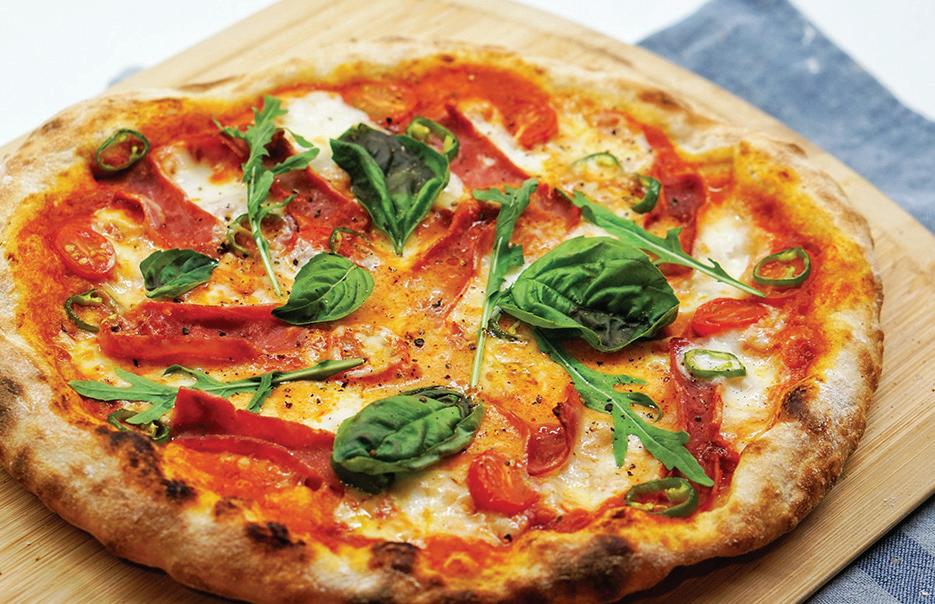
Serves 4
Co-op pizza dough
Muir Glen pizza sauce
· Ferndale Farmstead mozzarella, sliced or shredded
· Sausage, pepperoni, or plant-based meat
· Fresh veggies–think bell pepper, tomato, mushroom, onions, and more!
Preheat your oven to 500°F.
Prepare the dough as instructed on the package.
Once the dough is prepared on a round sheet pan or pizza stone, spread half the can of pizza sauce over the dough.
Add the toppings – start with meat followed by veggies and cheese.
Place in the hot oven for 12-15 minutes, or until the crust is golden.
Pro Tips:
· Although it may be tempting, avoid overloading the pizza with too many toppings. Too many toppings = too much weight, leading to a potentially undercooked crust.
· Wait until the pizza dough has reached room temperature before baking. I cannot stress this enough! I didn’t wait and my pizza was a burnt, yet gooey crust mess. RIP.
· P.S.– If you want to make this recipe literally one step and one ingredient, our take-and-bake pizzas are always a good idea.
Herb & Garlic Chicken with Buttery Fennel-Leek Orzo
This dinner is on a weekly rotation at my house. Fennel and leek add a rich, buttery flavor to the orzo while our Co-op made herb and garlic marinated chicken makes this dish feel extra special – without hours of waiting for the chicken to marinate. In the summer, I love pairing this dish with a homemade Greek salad. In the fall, some steamed broccoli or green beans really hit the spot.
Serves 4
· Co-op Herb & Garlic Marinated Chicken Breast

1 fennel bulb
1 leek
· 3/4 cup orzo
· 3 cups chicken stock, divided
Additional pantry ingredients: salt, pepper, butter, oil
Heat some oil and butter in a skillet over medium heat. Once shimmering, add in the leeks and fennel and cook till soft and fragrant, (about 3 min).
Add the orzo to the skillet and cook till browned and toasty, (about 5 min
Pour in 1/2 cup of chicken broth, stirring quickly to deglaze the pan. You don’t want to miss this part – all the flavorful, deglazed browned bits are worth it.
Once the chicken broth is almost entirely evaporated, but before the pan gets totally dry, reduce heat to medium-low and pour in the next ½ cup of broth. Complete this process until you’ve used all 21/2 cups of broth.
Make sure to stir consistently so the orzo cooks. Reduce heat to the lowest setting and keep warm on the stovetop, stirring occasionally. Add more chicken broth if the pan gets too dry.
Heat another oiled skillet over medium-high heat. Once the oil is shimmering, add in the chicken breast. Depending on how much you have, you may need to use two skillets. Cook until the sides are opaque, (about 9 min).
Flip and cook for another 9 minutes. Using a meat thermometer, temp the meat at 170°F before allowing it to rest on a cutting board..
Distribute the orzo to the plates and top with a squeeze of lemon and the chicken. Voila!
14 skagit valley food co op the natural enquirer october december 2022
Chicken Tortilla Soup
Who doesn’t love a good fall soup? Whenever I’m in a pinch on a cold, stormy Washington day, I always come back to this simple, hearty, and easy recipe from the first cookbook I ever bought myself. I’ve made a few tweaks, but I give lots of credit to Tieghan of Half Baked Harvest – she’s the real genius behind this soupy masterpiece.
Serves 6
· Co-op Rotisserie chicken, shredded
· 1 16oz jar salsa verde
1 16oz can enchilada sauce
1/2 cup brown rice
· 1 yellow onion, chopped
Additional pantry ingredients: chicken broth, salt, pepper, taco seasoning
Winter Salads
by Ben Goe
As the days grow shorter and colder, it’s human nature to seek solace in comfort food. Starch, fat, protein, and sweets crowd the table. In fall and winter, it’s easy to fall into unhealthy habits, and for raw veggies to all but vanish from your diet. For me, winter salads have become a comfort food. Crunchy spiced nuts, creamy cheeses, citrus fruits, spicy greens—all flavors that I associate with the holiday season.
Salads are a matter of balance. Sweet, salty, sour, acidic, bitter, spicy, and fatty. A salad doesn’t need all of those elements, only that they be balanced against each other. If you are using a lot of bitter greens, you’ll need to balance it with sweet greens or a sweet dressing. Sour and acidic flavors are mellowed by sweet or fatty ingredients. Likewise, a balance of textures is desirable. Soft, crunchy, creamy…
Salad greens fall into three categories: sweet, spicy, and bitter. I like to choose either spicy or bitter but not both. Spicy greens include watercress, arugula, and mustard greens. For bitter, try endive, dandelion, or radicchio. Sweet greens like kale, spinach, mustard, lettuce, sunflower greens, cabbage, and bok choy will round it out. Most greens other than lettuce can be wilted: dress and then toss briefly in a very hot, light pan and pull it back out before it cooks down. If you have a big metal bowl, a good pair of tongs, and a gas stove, that’s the way to do it.
The basic ratio for a vinaigrette is two parts oil to one part vinegar. I use aged balsamic, Dijon mustard, fresh herbs, and a mixture of olive and avocado oils. If you use a good amount of mustard instead of vinegar, or add an egg yolk, you can slowly beat the oil in with a whisk for a creamy, emulsified dressing. Mayonnaise can be used as a shortcut to creamy dressing. Add honey or brown sugar to sweeten, use citrus juice in place of all or some of the vinegar, or try using a strongly flavored oil like walnut or sesame (sparingly). Bitter and spicy greens benefit from pairing with a sweeter dressing, other sweet ingredients like fresh or dried fruit, and creamy add-ins like gorgonzola crumbles.
I always have a few non-green veggies in my salads. Slice crunchy veggies like sunchokes, carrots, cucumbers,

Heat some oil in a large stock pot over medium heat. Toss in the diced onion and a crack of salt and pepper.
Once the onion is cooked down a bit, stir in 2-3 tbsp of taco seasoning. Add the salsa verde, enchilada sauce, and 2 cups of chicken broth to the pot. Season to taste with salt, pepper, and more taco seasoning.
Bring to a boil over medium-high heat. Once boiling, stir in the brown rice, turn the heat to low and cover the pot.
After 45 minutes, test the brown rice to check for doneness. Once the rice is tender and just a bit chewy, stir in the chicken.
Allow the chicken to simmer in the pot for 5 minutes, till warmed through. Divide the soup in bowls and serve with toppings of your choosing! I like a squeeze of lime, some cheese, and of course, tortilla chips.
There you have it! A handful of recipes you can make with five ingredients or less. The best part? Your wallet will thank you for skipping takeout. And that, my friends, deserves another high five! Do you have a go-to weeknight dinner recipe you can whip up with just 5 ingredients? We’d love to hear your secret.
You can submit your personal high five recipes to: community@skagitfoodcoop.com
In Season Produce
fennel, or radish into thin slices. Tougher, more fibrous vegetables can be grated and added to the top of the salad or mixed into the dressing to marinate. Try this with things like rutabaga, celery root, sweet potato, and beets. For beets, I also like to boil until tender, peel, cut, and marinate in a little light vinegar.
And don’t shy away from fruit! Crunchy apples or pears sliced thin are great, but try segmenting oranges or grapefruit- cut away all of the skin and just the outer bit of fruit with a sharp knife, then cut each segment free from the membrane and remove seeds from the segments.
Freshly roasted or candied nuts are another great addition to winter salads, especially salads that feature bitter or spicy greens along with fruit. Roast nuts in a single layer on a cookie sheet at 350ºF for five to nine minutes depending on the nut—five minutes or so for pine nuts, up to eight for something like walnuts. They will start to change color and become fragrant. To make candied and spiced nuts use about ⅓ cup sugar to one egg white to a pound of nuts. Mix the sugar with ¼ tsp salt and whatever spices you like (try a teaspoon of garam masala!). Beat the egg white with a tablespoon of water until frothy. Toss the nuts with the egg white, then slowly stir in the sugar until the nuts are evenly coated. Bake on a cookie sheet, preferably with a sheet of parchment paper, for about ten minutes. Continue cooking them, stirring every 10 or 15 minutes until golden brown, another 30 to 50 minutes total. Allow to cool completely, and store in a sealed container (in the freezer for longer periods).
I hope that I’ve inspired some of you to eat more veggies in the dark months than normal. It’s easy to do in this beautiful and abundant valley, thanks to local farms that take seriously the idea that everyone should have access to locally grown high-quality produce all year round. Boldly Grown Farm, in particular, has given us variety in winter produce that we’d never seen, finding better ways to produce later and store longer. They, and all of our other wonderful local suppliers, allow us health in our comfort and bring a bit more light into the dark months.
Savoy, Collard greens, beets, red, green, & Napa cabbage, Guajillo peppers, frisee, escarole, green, red, + Lacinato kale, broccoli, radicchio, puntarella, Baby Blue Hubbard squash, Kabocha, & Delicata squash, Winter Luxury pie pumpkins from Boldly Grown Farm
Honeycrisp, Granny Smith, Fuji, Pinova & Gala apples red & green D’anjou pears from Brownfield Orchards
Organic apple cider + apples from Sauk Mountain Farm
Local apple cider (non organic) from Cedardale Orchards
Herbs, heirloom tomatoes, fennel, cabbage, cauliflower, broccoli from The Crows Farm
Assorted eggplant, melons, & pluots Seckel pears, Golden Delicious apples from Edible Acres
Taylor’s Gold Comice pears from Gary Moulton (Bow, WA)
Serrano, Anaheim, Poblano, jalapeno & assorted bell peppers, cauliflower, cabbage, Jack-o-lanterns, assorted winter squash, onions from Hedlin Family Farms
Slicer cucumbers, yellow & red potatoes from Highwater Farm
Bagged baby arugula, spicy & kale mixes from Long Hearing Farm
Sunflower sprouts, tomatillos, kohlrabi, Italian eggplant, French grey shallots, Brussels sprouts, Galeux de Eysines, Marina di Chioggia, Black Futsu, Jarrahdale, and spaghetti squash from Moondance Farm
Bunched carrots, beets & spinach, green cabbage, red & green dandelion, leeks, parsnips, bulk carrots and red beets from Ralph’s Greenhouse
Salad mix, bunched beets, kale, Daikon radish, purple cabbage, green tomatoes, sugar pie pumpkins, Acorn, Grey Ghost Kobocha, & mini spaghetti squash from Well Fed Farm
Yellow, red, Amarosa fingerling, purple, & Russet potatoes red, yellow, sweet & Cippolini onions from First Cut Farm
skagit valley food co op the natural enquirer october december 2022 15
Survey Says? Outstanding Customer Service!
We’ve said it before, and we’ll say it again: we love hearing from you! If you ever have questions or comments, you can pop online to fill out a kudos or suggestion form, or you can scribble us a note on one of the comment cards by the grocery registers. Some lucky shoppers also randomly receive a link to a customer experience survey on their receipt for $5 off their next shop. We’ve received countless responses, and we take all of them to heart, but we especially appreciate when you say nice things about us. So thanks!
As we celebrate Co-op month, we’d like to share some of the best shout-outs to acknowledge our customer service super stars.
Co-op Store Reviews
Friendly staff really makes every co-op visit a pleasure. I appreciate the fact that they are not only friendly to me, but they’re also friendly to new customers and people from out of town. It creates a real sense of community and cooperation.
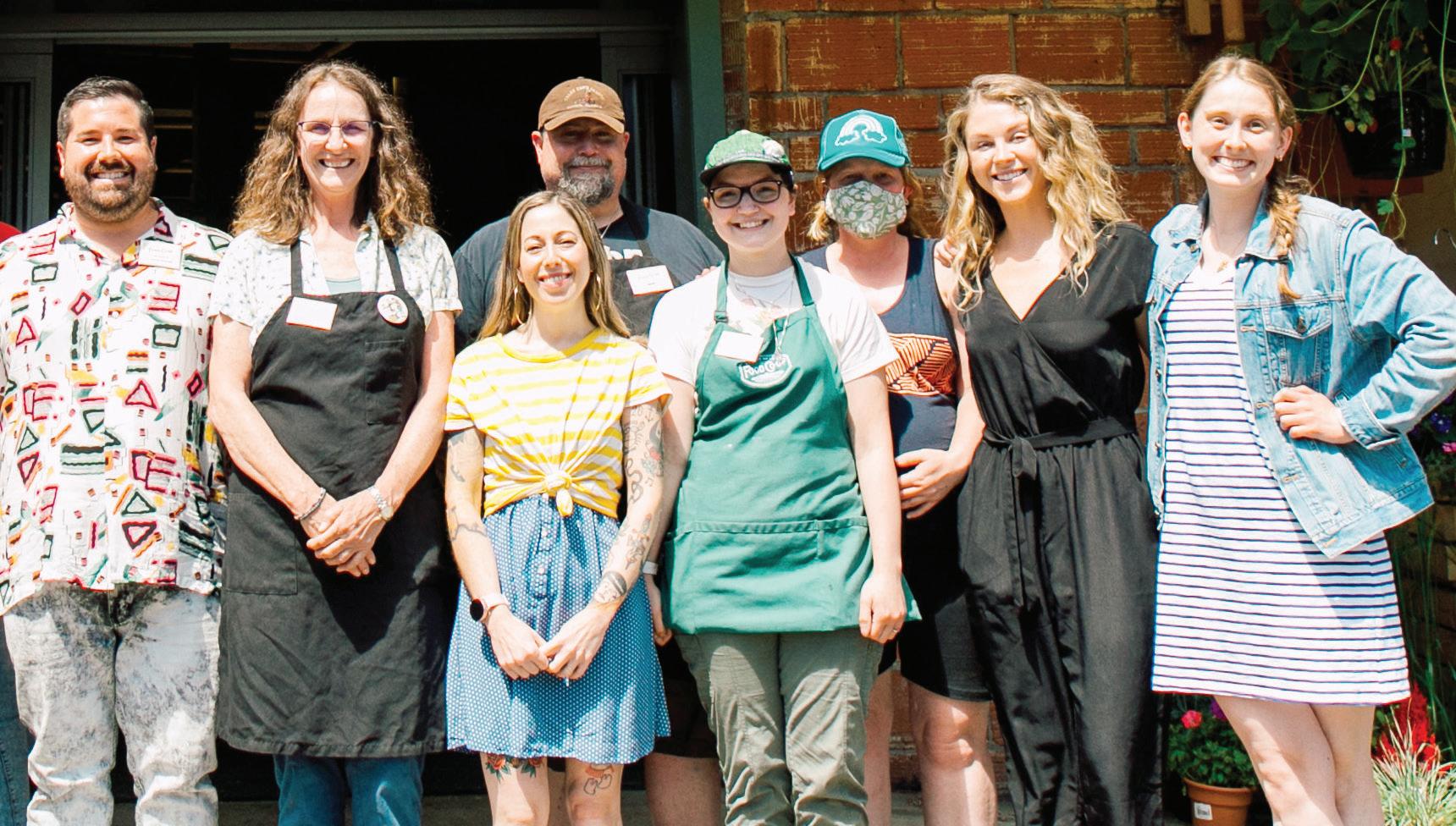

I love this co-op. Good vibe, assortment, and location. The staff is and always has been so nice! I’ve loved this coop for more than 20 years and still, it’s our favorite in the PNW! Just a good feel and trustworthiness to it!
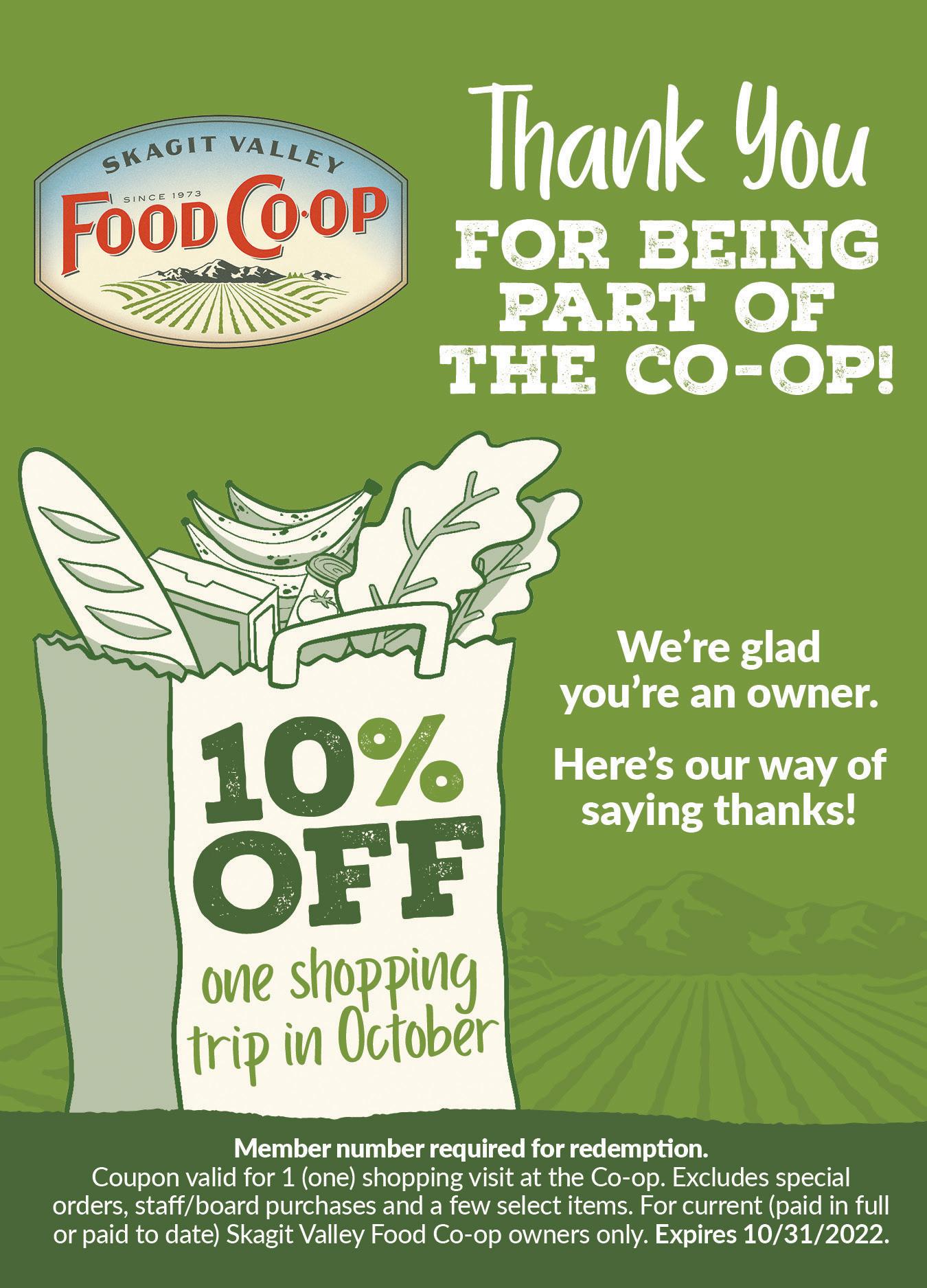
I like being able to buy healthy, organic foods. I also appreciate the cooperative business model. The staff is very personable and friendly!
· I am so grateful to have organic produce and other organic products readily available at this store. The staff members are very helpful whenever I have a question. On more than one occasion, one of the produce staff has introduced me to a new item I was unfamiliar with, like leek scapes and another vegetable from the broccoli family. If they didn’t have an answer, they looked it up for me.
As always, the staff in the co-op was in good spirits. I like the fact that they treat everyone with respect and good cheer, whether they are a local or a traveler.
I saw that there were some interesting things on sale and tried a new product that I really liked
*Some comments have been edited for spelling and grammar.
I didn’t notice my cashier’s nametag, but my receipt said Jason. He had just stepped back to the register, trading places with a different man who looked like he’d been covering for him. On a previous visit, my cashier (whom I’m guessing is Jason) had noticed an item I was purchasing and commented that he likes to eat it with a slice of cheese and a drizzle of balsamic. I’ve been buying this product for years but had never eaten it that way. I tried it and it was great. I appreciated his volunteering this idea. Very nice way to make a connection with a customer.
Jason has been working in this store for around 15 years and has always greeted me by name. He makes me feel appreciated and always asks me how I’m doing.
She always says hello and calls me by my name. She is cheerful and genuine when speaking to you.
Knows me, my co-op number, incredibly friendly cashier, one of my favorites.
Ruby is always very personable and greets me when I see her in the store
I’m actually not sure if I saw Ruby on this visit but I want to recognize her anyway. No matter what she’s doing, she seems aware of what’s going on and is actively working. She seems to anticipate problems and keep things running smoothly.

He’s so lovely, kind, funny, and attentive to staff needs as well as customer needs. I always see him interacting lovingly with staff.

Every time I go to Michael’s checkout stand he is super friendly and eager to share ideas. I really enjoy talking to him about certain issues. He’s young and glad to help.
I had a very nice conversation with Michael, he was efficient with the time I was at the register and it was nice to talk with him while there. Thanks for being so friendly, Michael!
Eli is always friendly and says hello whenever we see each other.
Even when the store is at its busiest, Eli makes a point to greet me and other customers. He’s a very fast and accurate checker. Always busy and keeping things moving in the store.
Eli is one of the best Co-op staff members. He greets me by name and always has a smile and kind words. When he is cashiering or bagging groceries, I select his line, knowing I can count on accuracy and efficiency, but especially warm service. Thank you, Eli!
Jason and Ruby
Jason F. — Co-op Employee Since 2008
Michael V. — Co-op Employee Since 2019
EliMichael
Eli L. — Co-op Employee Since 2020
Ruby D. — Co-op Employee Since 2020
16 skagit valley food co op the natural enquirer october december 2022

